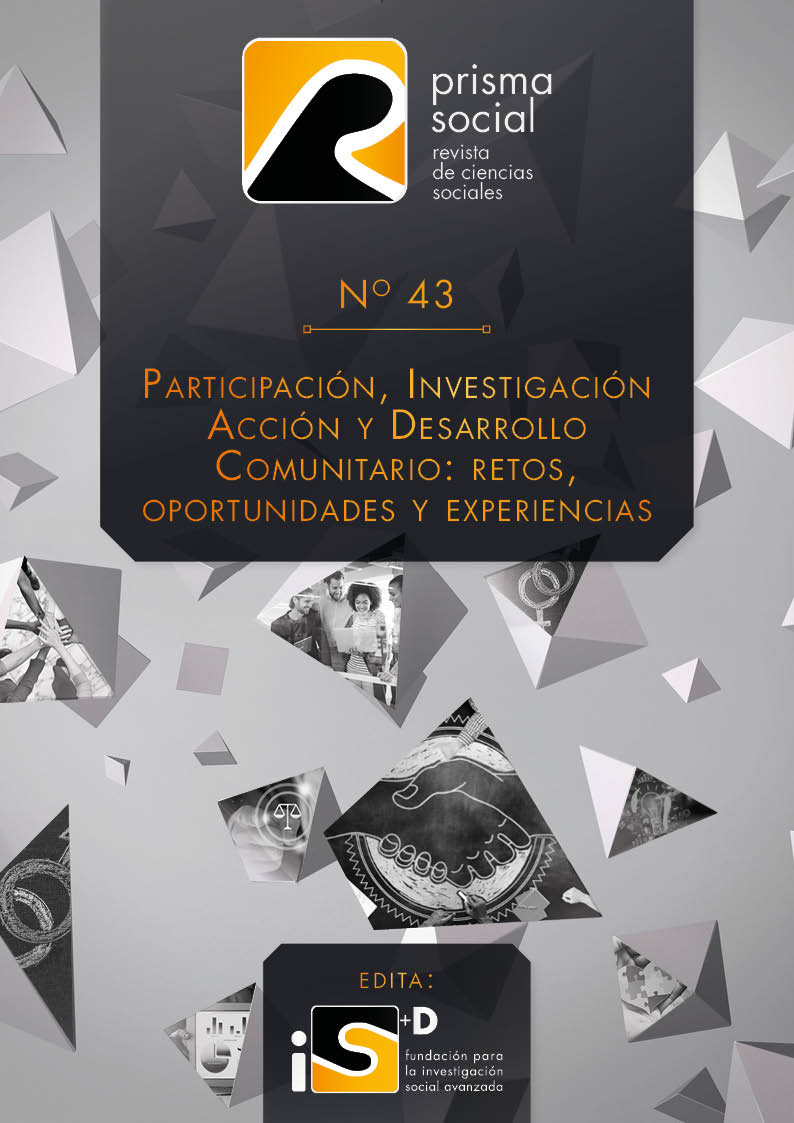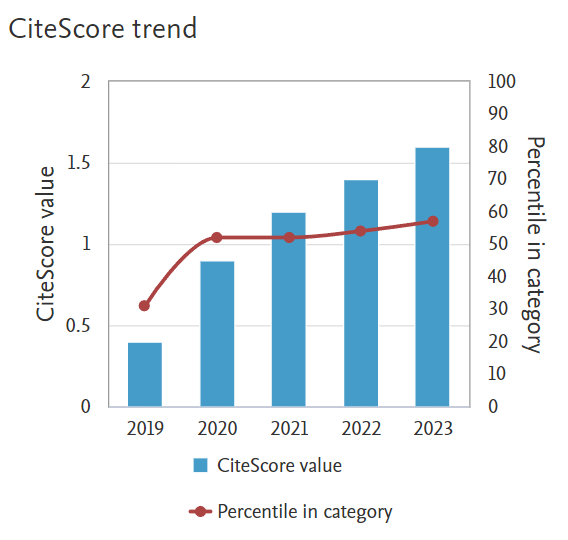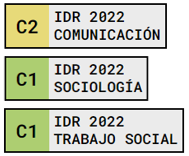El discurso social sobre el ciberacoso en la prensa digital
Un análisis para profesionales de la intervención social
Keywords:
Cyberbullying, qualitative method, COVID-19, Social Work, digital pressAbstract
Dada la influencia de los medios de comunicación en la construcción de realidades y opiniones, se investigó cómo se presenta el fenómeno del ciberacoso en las versiones digitales de los diarios El País y El Mundo.
Se empleó un método cualitativo. En una primera fase, se aplicó el análisis temático del contenido textual de las noticias seleccionadas. Se obtuvieron tres bloques temáticos:1: Metamorfosis del acoso escolar: surgimiento del ciberacoso; 2: El patriarcado en el ciberacoso: cuestiones de género; y 3: La pandemia del COVID-19: caldo de cultivo del ciberacoso. En la segunda etapa, se realizó un análisis discursivo para profundizar en los contenidos interconectados hallados en los tres bloques temáticos. Se obtuvo el RI: Un incipiente enfoque de prevención-intervención contra el ciberacoso.
Los resultados sugieren que existe una necesidad apremiante de planificar y aplicar medidas sistemáticas y bien coordinadas. Para ello, se debe hacer especial hincapié en sensibilizar a la sociedad en general, y a los profesionales de la intervención social en particular, sobre estas nuevas formas de ejercer la violencia, de manera que apoyen y contribuyan socialmente a esta iniciativa. Todas las instituciones implicadas deberían priorizar en sus agendas políticas la lucha contra la actual lacra del ciberacoso.
Downloads
References
Agatston, P., & Limber, S. (2018). Cyberbullying Prevention and Intervention: Promising Approaches and Recommendations for Further Evaluation. En J. U’Mofe (Ed.), Bullying Prevention and Intervention at School (pp. 73-93). Springer.
Arrieta-López, M., Linero-Racines, R.M., Sánchez-Montero, E., & Carrasquilla-Díaz, L. (2019). Aspectos jurídicos y neuropsicológicos del ciberbullying en el ámbito de las TIC en Colombia. Opción, 35 (89-2), 985-1022.http://hdl.handle.net/11323/5294
Avilés, J. M. (2013). Análisis psicosocial del ciberbullying: claves para una educación moral. Papeles del psicólogo, 34(1), 65-73. https://www.papelesdelpsicologo.es/pdf/2172.pdf
Barlett, C. P., & Gentile, D. A. (2012). Attacking others online: The formation of cyberbullying in late adolescence. Psychology of Popular Media Culture, 1(2), 123-135. https://doi.org/10.1037/a0028113
Braun, V., & Clarke, V. (2012). Thematic analysis. En H. Cooper, P. M. Camic, D. L. Long, A. T. Panter, D. Rindskopf, & K. J. Sher (Eds.), APA handbook of research methods in psychology, Vol. 2. Research designs: Quantitative, qualitative, neuropsychological, and biological (pp. 57-71). American Psychological Association.
Brochado, S., Soares, S., & Fraga, S. (2017). A Scoping Review on Studies of Cyberbullying Prevalence Among Adolescents. Trauma, Violence, & Abuse, 18(5), 523-531. https://doi.org/10.1177/1524838016641668
Cardozo, G., Dubini, P., & Lorenzino, L. (2017). Bullying y ciberbullying: Un estudio comparativo con adolescentes escolarizados. Revista Mexicana de Psicología, 34(2), 101-109.https://www.redalyc.org/pdf/2430/243057743003.pdf
Chan, H. C., & Wong, D. S. W. (2019). Traditional School Bullying and Cyberbullying Perpetration: Examining the Psychosocial Characteristics of Hong Kong Male and Female Adolescents. Youth & Society, 51(1), 3-29. https://doi.org/10.1177/0044118x16658053
Chapin, J., & Coleman, G. (2017). The cycle of cyberbullying: Some experience required. The Social Science Journal, 54(3), 314-318. https://doi.org/10.1016/j.soscij.2017.03.004
Chaves-Álvarez, A. L., Morales-Ramírez, M. E., & Villalobos-Cordero, M. (2020). Ciberbullying desde la perspectiva del estudiantado: “lo que vivimos, vemos y hacemos”. Revista Electrónica Educare, 24(1), 1-29. https://doi.org/10.15359/ree.24-1.3
Cuesta, J. D., Muñoz Muñoz, M. Á., & Izquierdo, T. (2018). Ciberbullying: análisis comparativo entre menores de España y Francia. Revista de Humanidades, 33, 173-188. https://doi.org/10.5944/rdh.33.2018.19180
Domínguez, L.,& Milllán-Franco, M.(2021). A discursive approach to bullying from the perspective of Social Work. Revista OBETS, 16(2), 281-296. https://doi.org/10.14198/OBETS2021.16.2.04
Donoso, T., Rubio, M. J., & Vilà, R. (2019). Factores asociados a la cibervictimización en adolescentes españoles de 12-14 años. Health and Addictions/Salud y Drogas, 19(1), 11-21. https://doi.org/10.21134/haaj.v19i1.398
Feijóo, S., Foody, M., O’Higgins, J., Pichel, R., & Rial, A. (2021). Cyberbullies, the cyberbullied, and problematic Internet use: Some reasonable similarities. Psicothema, 33(2), 198-205. https://doi. org/10.7334/psicothema2020.209
Garaigordobil, M. (2011). Prevalencia y consecuencias del cyberbullying: una revisión. International journal of psychology and psychological therapy, 11(2), 233- 254.https://www.redalyc.org/pdf/560/56019292003.pdf
Garaigordobil, M. (2014). Cyberbullying: Una nueva forma de violencia entre iguales a través de los medios electrónicos. Padres y Maestros, 357, 34-40. http://dx.doi.org/10.14422/pym.v0i357.3300
González, V., & Prendes, M. P. (2018). Ciberacosadores: un estudio cuantitativo con estudiantes de secundaria. Pixel-Bit, Revista de Medios y Educación, 53, 137-149. https://doi.org/10.12795/pixelbit.2018.i53.09
Herrera-López, M., Romera, E.M., & Ortega-Ruiz, R. (2018). Bullying y Cyberbullying en Latinoamérica. Un estudio bibliométrico. Revista mexicana de investigación educativa, 23(76),125-155.https://www.scielo.org.mx/scielo.php?script=sci_arttext&pid=S1405-66662018000100125
Hinduja, S., & Patchin, J. W. (2008). Cyberbullying: An Exploratory Analysis of Factors Related to Offending and Victimization. Deviant Behavior, 29, 129-156. https://doi.org/10.1080/01639620701457816
Íñiguez, L. (2006). Análisis del Discurso. Manual para las Ciencias Sociales. UOC.
Kowalski, R. M., Giumetti, G. W., Schroeder, A. N., & Lattanner, M. R. (2014). Bullying in the digital age: A critical review and meta-analysis of cyberbullying research among youth. Psychological Bulletin, 140(4), 1073-1137. https://doi.org/10.1037/a0035618
Kowalski, R. M., Limber, S. P., & McCord, A. (2019). A developmental approach to cyberbullying: Prevalence and protective factors. Aggression and Violent Behavior, 45, 20-32. https://doi.org/10.1016/j.avb.2018.02.009
Lee, J., Abell, N., & Holmes, J. L. (2017). Validation of Measures of Cyberbullying Perpetration and Victimization in Emerging Adulthood. Research on Social Work Practice, 27(4), 456-467. https://doi.org/10.1177/1049731515578535
Lu, S., Zhao, L., Lai, L., Shi, C., & Jiang, W. (2022). How Do Chinese People View Cyberbullying? A Text Analysis Based on Social Media. International Journal of Environmental Research and Public Health, 19, 1822. https://doi.org/10.3390/ijerph19031822
Lucas-Molina, B., Pérez-Albéniz, A., Solbes-Canales, I., Ortuño-Sierra, J., & Fonseca-Pedrero, E. (2022). Bullying, Cyberbullying and Mental Health: The Role of Student Connectedness as a School Protective Factor. Psychosocial Intervention, 31(1), 33-41. https://doi.org/10.5093/pi2022a1
Martin-Criado, J.-M., Casas, J.-A., Ortega-Ruiz, R., & Del Rey, R. (2021). Supervisión parental y víctimas de ciberbullying: influencia del uso de redes sociales y la extimidad online. Revista de Psicodidáctica, 26, 161-168. https://doi.org/10.1016/j.psicod.2020.12.005
Martínez-Ferrer, B., León-Moreno, C., Suárez-Relinque, C., Del Moral-Arroyo, G., & Musitu-Ochoa, G. (2021). Cybervictimization, Offline Victimization, and Cyberbullying: The Mediating Role of the Problematic Use of Social Networking Sites in Boys and Girls. Psychosocial Intervention, 30(3), 155-162. https://doi.org/10.5093/pi2021a5
McInroy, L. B., & Mishna, F. (2017). Cyberbullying on Online Gaming Platforms for Children and Youth. Child and Adolescent Social Work Journal, 34, 597-607. https://doi.org/10.1007/s10560-017-0498-0
Muñoz, J. (2016). Factores de riesgo en el acoso escolar y el ciberacoso: implicaciones educativas y respuesta penal en el ordenamiento jurídico español. Revista Criminalidad, 58(3), 71-86. https://dialnet.unirioja.es/servlet/articulo?codigo=5763562
Navarro, R. (2016). Gender issues and cyberbullying in children and adolescents: From the analysis of gender differences to the examination of gender identity. En R. Navarro., S. Yubero. y E. Larrañaga (Eds.), Cyberbullying across the globe. Gender, family and mental health (pp. 35-61). Springer International Publishing.
Olweus, D., & Limber, S. P. (2018). Some problems with cyberbullying research. Current Opinion in Psychology, 19, 139-143. https://doi.org/10.1016/j.copsyc.2017.04.012
Rizo, L. J., & Picornell, A. (2016). Percepciones del profesorado respecto al bullying y su relación con la desafección y el fracaso escolar en la provincia de Salamanca. Revista Prisma Social, 17, 396-414. https://revistaprismasocial.es/article/view/1290
Paek, S. Y., Lee, J., & Choi, Y. (2022). The impact of parental monitoring on cyberbullying victimization in the COVID-19 era. Social Science Quarterly, 103 (2), 294-305. https://doi.org/10.1111/ssqu.13134
Pedraz, A., Zarco, J., Ramasco, M., & Palmar, A. M. (2014). Investigación cualitativa. Elsevier.
Pfetsch, J. S., Schultze-Krumbholz, A., & Lietz, K. (2022). Can Acting Out Online Improve Adolescents’ Well-Being During Contact Restrictions? A First Insight Into the Dysfunctional Role of Cyberbullying and the Need to Belong in Well-Being During COVID-19 Pandemic-Related Contact Restrictions. Frontiers in Psychology, 12. https://doi.org/10.3389/fpsyg.2021.787449
Picornell-Lucas, A. & López-Peláez, A. (2022). The digital citizenship of children and adolescents: Challenges for social work education. Research in Education and Learning Innovation Archives, 28, 32-37. https://doi.org/10.7203/realia.28.23001
Polo, M. I., León, B., Felipe, E., & Gómez, T. (2014). Cyberbullying en tercer ciclo de Educación Primaria: variables moduladoras y consecuencias sobre la ansiedad. Apuntes de Psicología, 32 (1), 5-14. https://www.apuntesdepsicologia.es/index.php/revista/article/view/481/381
Potter, J., & Wetherell, M. (1987). Discourse and social psychology: beyond attitudes and behavior. Sage.
Pulido-Montes, C., & Ancheta-Arrabal, A. (2021). La educación remota tras el cierre de escuelas como respuesta internacional a la Covid-19. Revista Prisma Social, 34, 236-266. https://revistaprismasocial.es/article/view/4217
Rodriguez-Rivas, M. E., Varela, J. J., González, C., & Chuecas, M. J. (2022). The role of family support and conflict in cyberbullying and subjective well-being among Chilean adolescents during the Covid-19 period. Heliyon, 8, e09243. https://doi.org/10.1016/j.heliyon.2022.e09243
Ruiz, J. I. (2012). Metodologi?a de la investigacio?n cualitativa (5ª ed.). Universidad de Deusto.
Sánchez, J. P., Magaña, L., & Telumbre, J. Y. (2022). Características de ciberbullying en adolescentes escolarizados. Dilemas Contemporáneos: Educación, Política y Valores, 2, 1-18. https://doi.org/10.46377/dilemas.v9i2.3140
Schunk, F., Zeh, F., & Trommsdorff, G. (2022). Cybervictimization and well-being among adolescents during the COVID-19 pandemic: The mediating roles of emotional self-efficacy and emotion regulation. Computers in Human Behavior, 126, 107035. https://doi.org/10.1016/j.chb.2021.107035
Slovak, K., & Singer, J. B. (2011). School social workers' perceptions of cyberbullying. Children & schools, 33(1), 5-16. https://doi.org/10.1093/cs/33.1.5
Tajahuerce, I., Franco, Y.G., & Juárez, J. (2018). “Ciberbullying” y género: nuevos referentes en la ocupación de los espacios virtuales. Estudios Sobre El Mensaje Periodístico, 24(2), 1845-1859. https://doi.org/10.5209/esmp.62250
UNESCO (2019). Behind the numbers: Ending school violence and bullying. https://unesdoc.unesco.org/ark:/48223/pf0000366483.locale=es
UNESCO y Ministerio de Educación, Juventud y Deportes de Francia (2020). Recomendaciones del Comité Científico para la prevención y la lucha contra el acoso y el ciberacoso escolar. Conferencia Internacional sobre Acoso Escolar. https://unesdoc.unesco.org/ark:/48223/pf0000374794_spa.locale=es
Van Dijk, T. A. (2001). Critical discourse analysis. En D. Schiffrin, D. Tannen, & H. E. Hamilton (Eds.), Handbook of discourse analysis (pp. 352-371). Blackwell Publishers.
Willard, N. E. (2007). The Authority and Responsibility of School Officials in Responding to Cyberbullying. Journal of Adolescent Health, 41, S64–S65. https://doi.org/10.1016/j.jadohealth.2007.08.013
Williford, A., & DePaolis, K. J. (2019). Validation of a Cyber Bullying and Victimization Measure Among Elementary School-Aged Children. Child and Adolescent Social Work Journal, 36, 557-570. https://doi.org/10.1007/s10560-018-0583-z
Willoughby, M. (2019). A review of the risks associated with children and young people’s social media use and the implications for social work practice. Journal of Social Work Practice, 33(2), 127-140. https://doi.org/10.1080/02650533.2018.1460587
Zakuan, Z. Z. M., & Saian, R. (2022). Cyberbullying victimization during COVID-19: psychological effects and the legal measures. International Journal of Public Health Science (IJPHS), 11(1), 232-239. https://doi.org/10.11591/ijphs.v11i1.21047
Downloads
Published
How to Cite
Issue
Section
License
Copyright (c) 2023 Revista Prisma Social

This work is licensed under a Creative Commons Attribution-NonCommercial-NoDerivatives 4.0 International License.
Those authors who publish in this journal accept the following terms:
-
Authors retain copyright.
-
Authors transfer to the journal the right of first publication. The journal also owns the publishing rights.
-
All published contents are governed by an Attribution-NoDerivatives 4.0 International License.
Access the informative version and legal text of the license. By virtue of this, third parties are allowed to use what is published as long as they mention the authorship of the work and the first publication in this journal. If you transform the material, you may not distribute the modified work. -
Authors may make other independent and additional contractual arrangements for non-exclusive distribution of the version of the article published in this journal (e.g., inclusion in an institutional repository or publication in a book) as long as they clearly indicate that the work was first published in this journal.
- Authors are allowed and recommended to publish their work on the Internet (for example on institutional and personal websites), following the publication of, and referencing the journal, as this could lead to constructive exchanges and a more extensive and quick circulation of published works (see The Effect of Open Access).

















